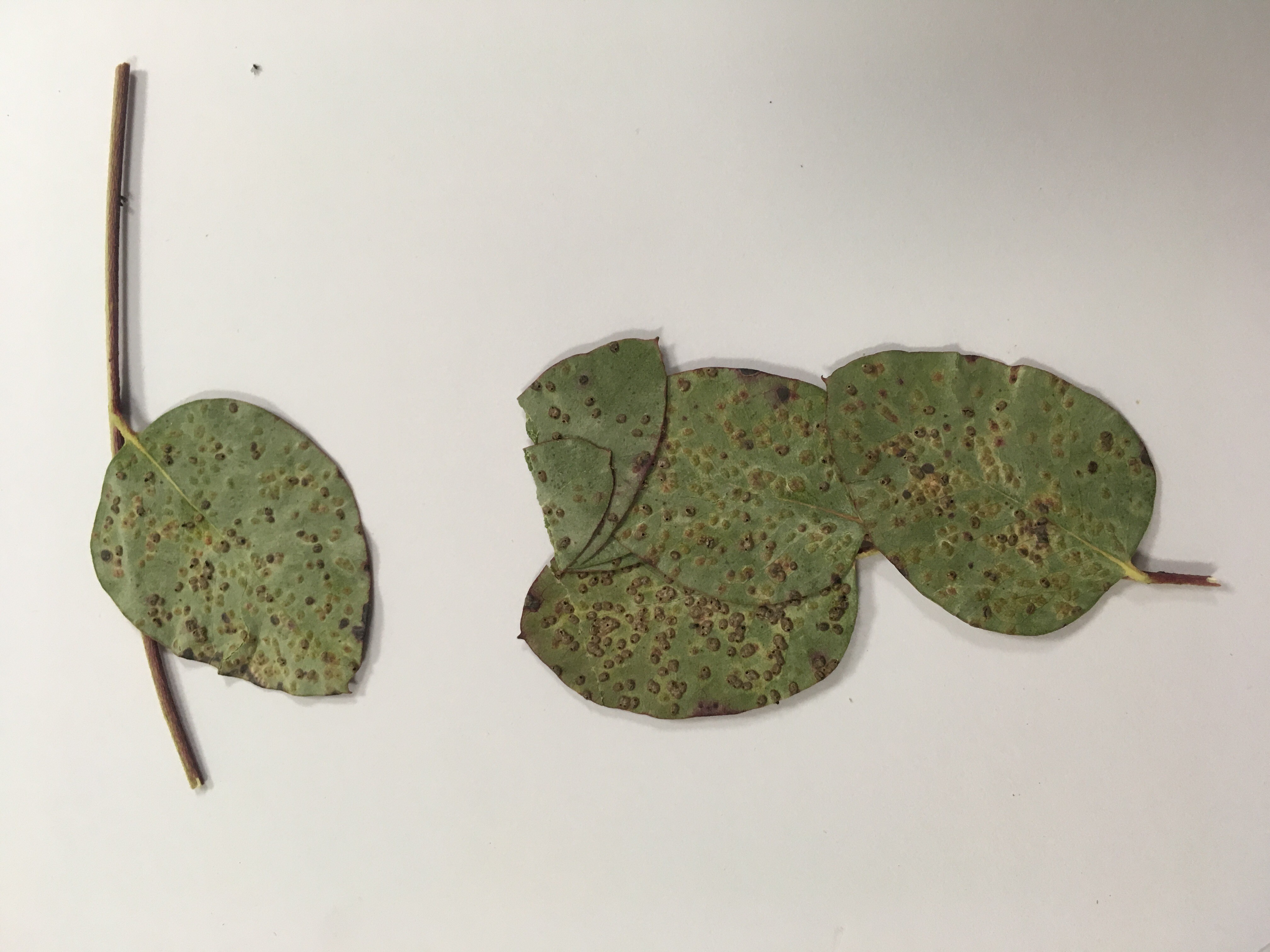In late June a plant sample came to the Foremen at the National Botanic Gardens for identification of a plant problem. On close examination small galls were identified on the leaves of Eucalyptus gunnii from a suburban garden in Dublin 6. The specimen was placed in a plastic bag and within a short period small insects were seen emerging from the galls. These were identified by Brendan Sayers, Glasshouse Foreman as the Eucalyptus gall wasp, Ophelimus maskellii. Specimens of the insects were send to the Plant Health Section of the Department of Agriculture, Food and the Marine where the identification was confirmed.
Already known to be found in Scotland, Wales, England and Continental countries, it is no surprise that this insect, originally from New South Wales, Australia would show up in Ireland. The parasitic wasp has followed the trade in Eucalyptus as a garden ornamental and a cut foliage plant around the world where its natural predator is not present. The adult wasps deposit a single egg at a time into the leaf resulting in small galls which host the developing insects until maturity. The adult is a tiny 1 mm black wasp. Unfortunately the galls severely disfigure the leaves and in extreme cases can cause defoliation.
Eucalyptus gall wasp is not a regulated pest and in most cases causes unslightly damage to foliage (see image). Chemical controls will most probably be ineffective and collecting and destroying the fallen leaves will reduce the amount of adults of the next generation.

Damage to Eucalyptus gunnii caused by Ophelimus maskellii
